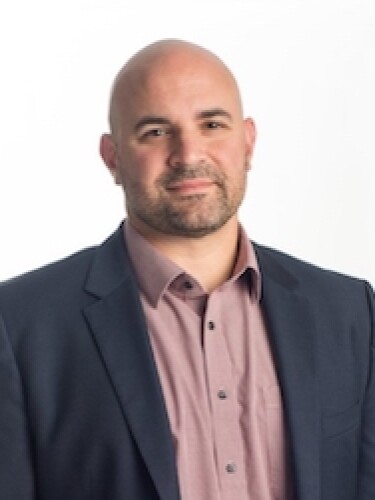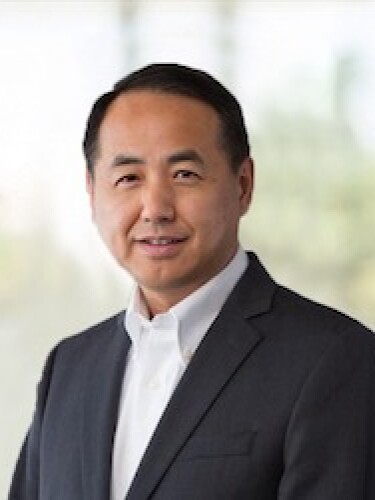As CAR T cell therapies attract significant biopharma investment, experts say there is plenty of space in the growing market for both treatments that use patients’ own cells and for those that rely on donor cells.
An IV bag circled by money, blood cells, and celebratory materials /Nicole Bean for BioSpace
As CAR T cell therapy developers reel in funds and attract big pharma partners, many pipelines are expanding to include both autologous and allogeneic programs. With the former being highly expensive and time-consuming to manufacture, the latter, off-the-shelf allogeneic approach would seem more attractive on the surface. But experts say it’s not quite that simple, and that both approaches have their strong suits.
Autologous Leads While Allogeneic Gains
Autologous cell therapies utilize cells that are taken directly from a patient, modified and then reintroduced to that patient. The FDA has already approved half a dozen autologous CAR-T therapies for different blood cancers, including multiple myeloma and types of lymphomas. Most companies tend to start with an autologous portfolio with an allogeneic approach behind it, Mike Paglia, chief technology officer for ElevateBio BaseCamp, told BioSpace.
“The validation of autologous is a little bit easier,” Paglia said. “You can get to that proof of concept with an autologous approach a little bit more rapidly because the ... regulated path is already proven.”
One of the biggest hurdles for autologous therapies, aside from the staggering cost estimated between $100,000 to $300,000, is the vein-to-vein time frame. Development involves myriad steps from the time the cells are withdrawn from the patient before being returned as therapy. Extracted cells are shipped to a manufacturing facility to be manipulated, expanded and tested in the lab before being returned to the healthcare facility where the patient has been prepped to receive them. This multi-faceted process can add up to five to six weeks, Paglia said.
Considering that the current therapies on the market are approved for use only in later lines of treatment—for those for whom other treatments have failed—eligible patients tend to have more advanced disease and often die while waiting, he said.
Paglia noted that several companies are developing technology to reduce the cost and speed of manufacture, with the ultimate goal of dropping delivery time to less than 10 days.
In parallel, companies are increasingly pursuing allogeneic therapies, those developed from healthy donor cells. Such therapies could be available to patients off-the-shelf, with little to no wait time. While only a handful have been approved by the FDA so far, the technology is rapidly advancing.
“We view allogeneic as an emerging opportunity, but the technology is still at its relative infancy,” Guowei Fang, chief scientific officer at Legend Biotech, told BioSpace.
Legend and ElevateBio have invested in technologies for both cell therapy types. While Legend’s pipeline is primarily composed of autologous candidates—including a handful of late-stage therapies being developed in partnership with Janssen—Fang said the company saw the potential in the allogeneic approach and began investing in an appropriate platform five years ago.
AlloVir, one of ElevateBio’s portfolio companies, is working on a pipeline of allogeneic T cell therapies for immunocompromised patients at high risk for a handful of life-threatening viral infections. These treatments could potentially be given to a patient with a viral infection within 24–72 hours, Paglia said.
No Slam Dunks
CAR T cell therapies have shown high levels of success in patients with hematological malignancies such as B-cell lymphomas, boasting complete response rates between 70% and 94% across different trials. Yet, as illustrated by the FDA’s recently announced probe into malignancies linked to BCMA- or CD19-directed autologous CAR-T therapies, safety risks persist.
While autologous treatments are generally considered safer, both types of cell therapies come with an inherent risk of toxicity-related events. These include potentially deadly cytokine release syndrome and CAR T–related encephalopathy syndrome, which can lead to neurologic complications. Allogeneic therapies have a higher risk of rejection and graft-versus-host disease if the body recognizes the donor’s altered cells as foreign, Paglia said.
Moreover, cell therapies are not universally effective. Some patients simply don’t respond at all and those that do are at risk for reduced efficacy over time, leading to relapse. Up to 50% of patients receiving CAR T cell therapy relapse within a year after treatment, according to Genedata Profiler.
Hematological cancers, the initially preferred target for CAR-T therapies, account for only about 10% of all malignancies. However, the use of cell therapies in solid tumors has been limited, in part because the tumor microenvironment is difficult to infiltrate and is a hostile environment for immune cells.
Increased Investment
Technology is advancing to overcome the distinct challenges in autologous and allogeneic approaches. Examples include building in kill switches and tweaking therapy design to dampen the potential for cytokine release syndrome.
And big pharma is here for it. In October, Bristol Myers Squibb announced an expanded agreement for a second CAR-T program with Cellares, which had raised $255 million in Series C funding to complete its New Jersey cell therapy manufacturing facility. The same month, Bayer opened its first cell therapy manufacturing facility in Berkeley, California. The $250 million plant is ready to produce an investigational cell therapy for Parkinson’s disease being developed by Bayer subsidiary BlueRock Therapeutics, among other cell-based therapeutics from Bayer. Less than a month later, AstraZeneca dropped $245 million for exclusive rights to up to 10 cell and gene therapy products from Cellectis, which is developing allogeneic CAR T therapies for cancer. Cellectis claims its TALEN technology is protective against graft-versus-host disease and mitigates the risk of rejection.
Cell and gene therapies are “taking up huge amounts of capital,” Graig Suvannavejh, a senior biopharma and biotechnology equity research analyst at Mizuho Americas, told BioSpace. “You get what we call therapeutic crowding.”
Suvannevejh called the allogeneic approach to cell therapy a better solution “simply because it’s less expensive” and would be a readily available option to patients. Yet the continued advancement of autologous technology and research shows that there is indeed room at the table for both approaches.
“The rapidness at which these autologous therapies get released and manufactured is going to get better” and more cost effective, Paglia said. “I think there’s still a place for autologous cell therapy [though] allogeneic will prevail in certain indications.”
Fang views the two approaches as sharing a “complementary landscape” and sees a need for allogeneic approaches, particularly in very aggressive disease. For a patient with a survival time of a few months, the month or more it takes to manufacture an autologous therapy is not practical.
Autologous and allogeneic therapies “are not necessarily in an all or none relationship,” Fang said. As technology advances for both approaches, indications beyond cancer are also possible, he said. While Legend’s current pipeline assets are cancer-focused, Fang said the company is actively exploring other areas.
The global cell therapy market is projected to hit more than $83 billion by 2032.
Kate Goodwin is a freelance life science writer based in Des Moines, Iowa. She can be reached at kate.goodwin@biospace.com and on LinkedIn.








